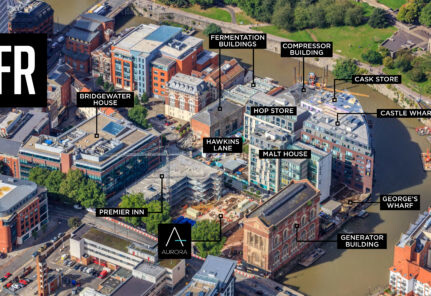
March 12, 2018
The relationship between demographics and property development has tended to correlate positively, mainly because growth in population typically results in more demand for property and vice versa. This remains the case today, but there is a twist: demographic shifts are not necessarily positive for all sectors. While traditional commercial sectors will need to evolve, alternative and new sectors could flourish.
The UK population today is about 65.6m. By 2027, the Office for National Statistics projects that it will reach 70m, of which about 84% (59m) will be living in urban areas and 20.5% will be more than 65 years’ old. Ten years ago, the population was 60.8m, of which 80% (48m) lived in urban areas and 15.9% were over 65.
Interestingly, the UK population grew by 4.5m, or 0.25%, per annum between 1976 and 2006, but during the subsequent 30 years its growth rate is expected to triple to 12.5m annually. This may explain some of the UK property industry’s relative success over the past decade and bodes well for the future.
However, while a growing, ageing and urbanising population creates a positive momentum for UK property, it is occurring at a time of huge technological advances. Across the UK property industry there is an emerging acknowledgment that automation, digitisation and distribution mechanisms are changing our working world. We are seeing consensus on creating a built environment that is information-centric; offices are becoming smarter, residential-for-rent more customer-focused, and senior living facilities are using medical tracking devices to monitor patients and response times. In some sectors, it is likely that technological advances may counter the strong tailwinds created by demographics.
So what does this mean for an investor in UK property? A number of underlying demographic themes are driving UK property investment strategies. The first and probably most widely acknowledged is the shortage of affordable homes to rent or buy for the younger generation, particularly in the south-east. Years of under-building, increased demand from a growing population and a lack of available land have created a structural undersupply. This has led to more favourable government planning regulation and increased housebuilders’ requirement for ‘oven ready’ sites to develop, creating an opportunity to re-zone land for residential development. Additionally, alternative housing strategies such as build-to-rent are gaining momentum and will probably be a crucial part of providing more affordable accommodation.
A second positive demographic theme for property investment is the ageing UK population. Given the growing portion of a larger population over retirement age, there is increasing commercial rationale for more assisted-living homes and healthcare facilities. However, there is also an operating element to this type of real estate that requires additional non-real-estate expertise. Interestingly, this sector may oppose the wider urbanisation trend, as retirees are more likely to gravitate to rural or coastal locations than larger urban centres. This may create an opportunity to repurpose buildings that may be vacated as urbanisation continues.
While strong population growth and urbanisation will continue to provide positive momentum for traditional commercial real estate sectors, technological advances may be countering to create headwinds in some sectors. For example, over the past couple of years we have witnessed the growth of serviced-office providers. They accounted for 30% of office take-up in central London in 2017, and are responding to a more agile and technologically enabled workforce.
A less static workforce may have implications for lease lengths and, therefore, desirability of small-to-mid-sized office assets. Similarly, the growth of online shopping has affected the retail and industrial sectors. Vacancy on the high street by the middle of 2017 was 12.2% (the peak was 14.6% in 2012) across the UK versus 7.3% in 2006; conversely, industrial rents in the south-east have risen strongly as online retailers seek to secure their storage and distribution channels, including last-mile delivery.
Demographics will undoubtedly create opportunities, but real estate investors need to consider each sector based on its merits. A traditional commercial real estate portfolio might benefit from a sector rebalancing and an adjustment to include new and alternative sectors such as residential land, build-to-rent or assisted living.

Furthermore, owners of office and retail assets may need to ensure they evolve with demographics and technological trends to future proof their investments.
Author: Andrew Robinson, Head of Capital Raising
Link to article: http://bit.ly/2p2RXWC